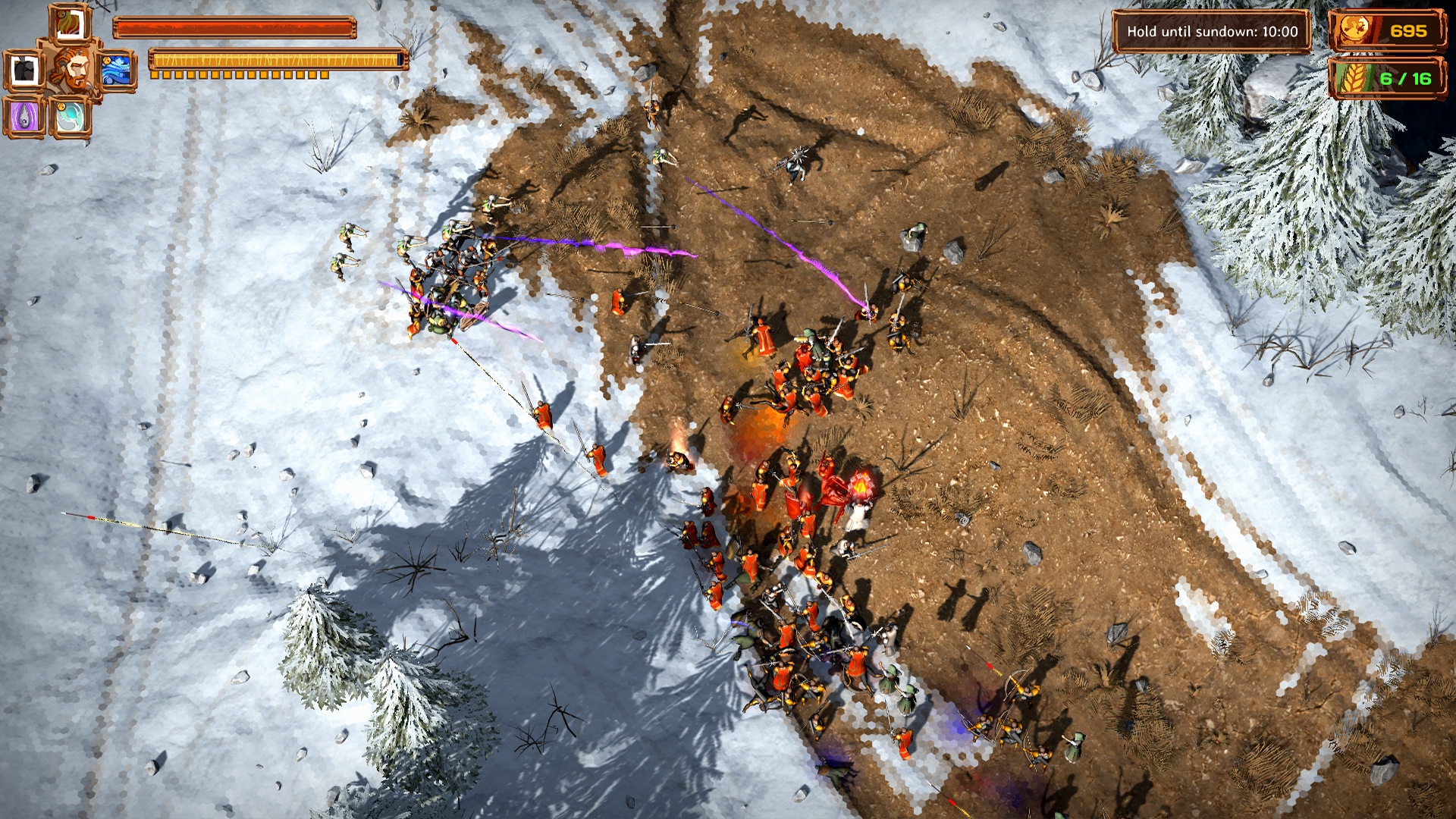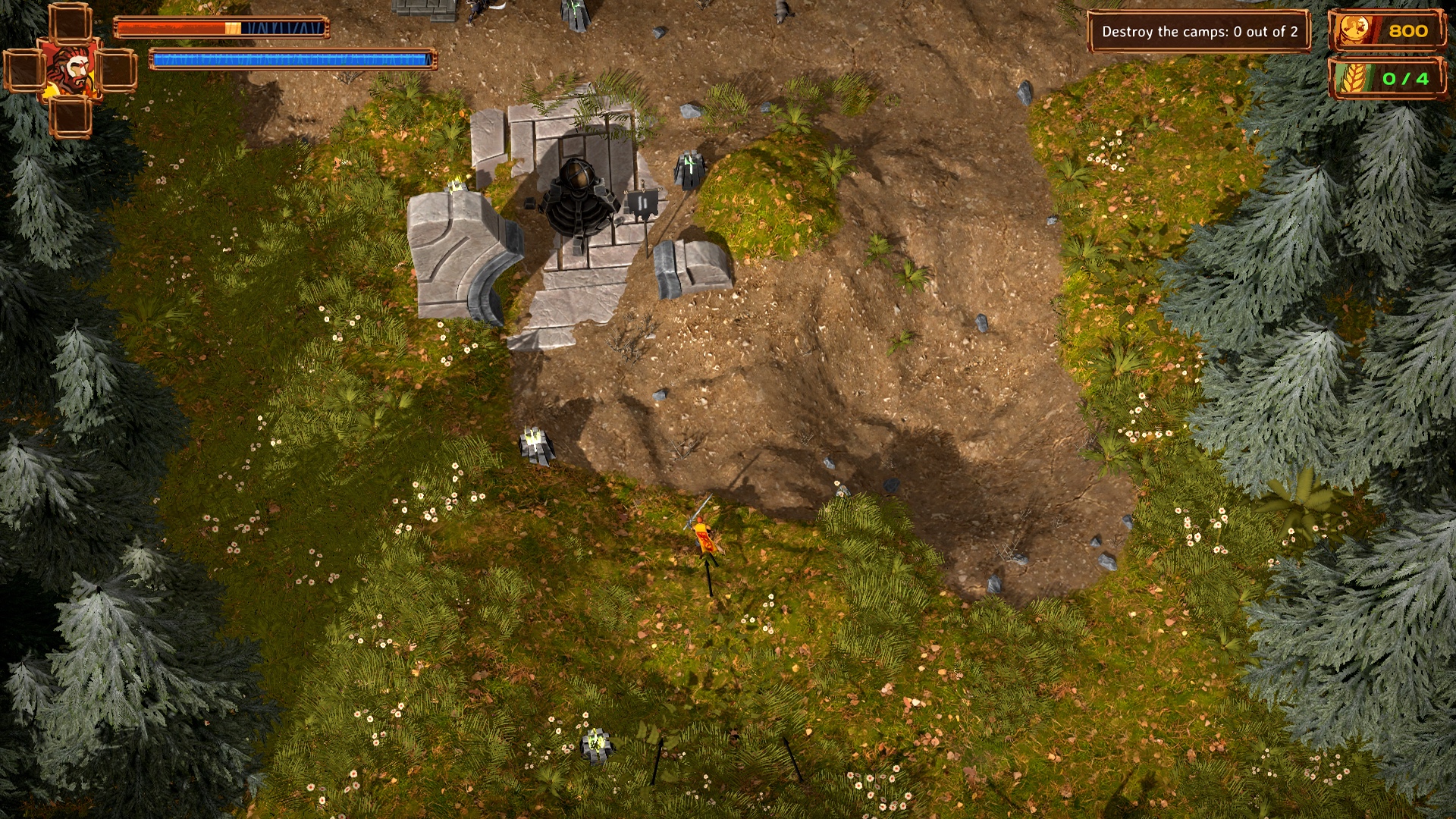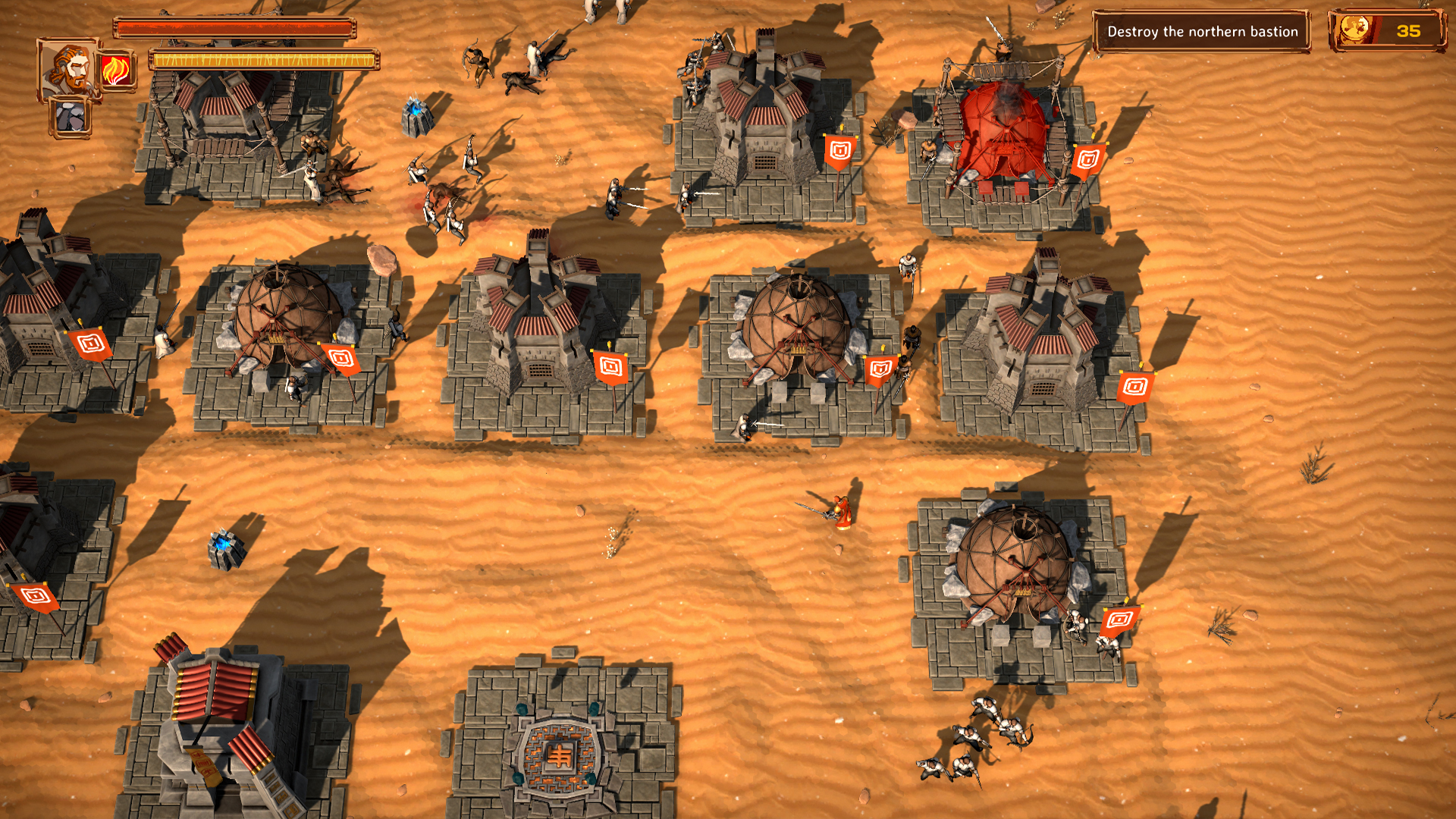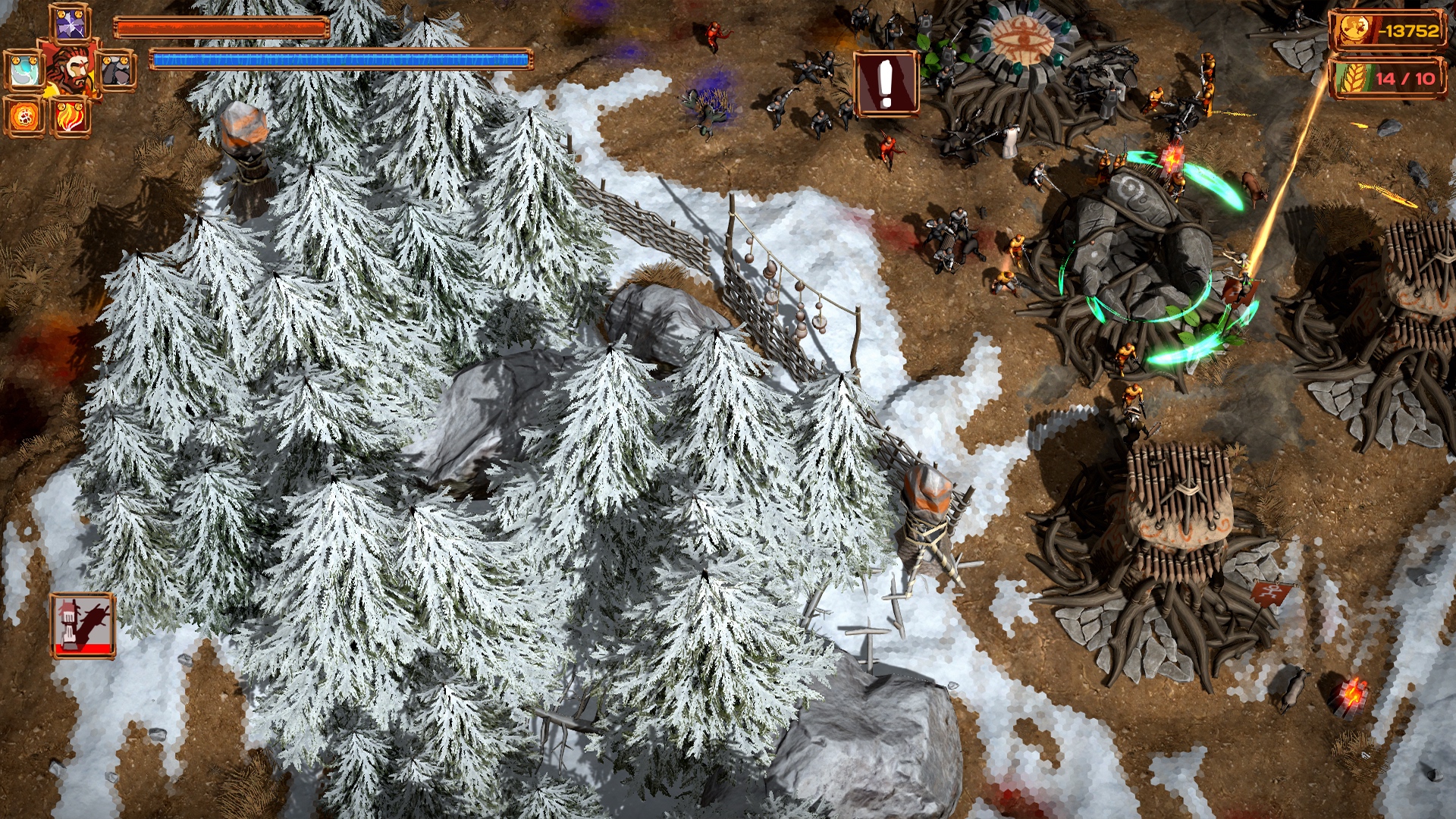
Strategy is a wide-ranging genre that allows developers to make some vastly unique experiences, and developers Tower Five are looking to use that width to their advantage with Lornsword: Winter Chronicle. Promising a game that balances action-oriented combat with real time strategy mechanics, it’s certainly got an interesting idea in place, and with its focus on narrative and storytelling, if the game succeeds, it can certainly make a mark for itself. Recently, we sent across some of our questions about Lornsword to Tower Five, hoping to learn more about the game and where they plan on taking it in the future. Read our conversation below.
"The next step for Lornsword is clearly to go online, have a proper PVP mode with a well balanced matchmaking system. But this is something that we want to do well and it was way out of the scope of the first Chronicle."
Lornsword’s drop-in co-op capabilities are sure to be attractive to a lot of people. Is this an aspect of the game you’re looking to build upon in the coming months, perhaps with support for more than two player co-op?
We tried splitting the screen to 3 and 4 but it becomes really hard to follow, and you can no longer have UI “elegantly” mirrored at the top. So we decided not to follow on that experiment and believe that we would need to do that with an online mode where each player is on his own screen or with a max of 2 players by screen.
What are your plans regarding the competitive side of things? Given its nature, Lornsword seems like just the kind of game that would benefit from a strong competitive component.
Yes, and that’s linked to the previous usage with 3-4 co-op players… the next step for Lornsword is clearly to go online, have a proper PVP mode with a well balanced matchmaking system. But this is something that we want to do well and it was way out of the scope of the first Chronicle. That’s why we limited our reach to local play, with co-op, that was already a challenge for the small team that we are.
Strategy titles like Lornsword are often best played with a keyboard and mouse, but Lornsword instead claims to be best played with a controller- can you talk us through why that is the case? Is it a question of accessibility?
The key idea was to have a strategy game that puts you on the battlefield, that removes you from the abstract and remote position of a “commander” issuing orders through an abstract UI which doesn’t exist in the game’s world. This led to controlling your general directly on the battlefield and so controlling a character in a 3D world… and this is great through a controller: movement on the left stick, camera on the right, actions – on buttons and triggers. There’s a good reason that this method is mostly used by centric action games. Once this was established, we kept working in that direction: how to take strategic decisions (economy management, building management…) through your character, quickly and intuitively? That led to the concept of building selectors, far sight, summons… and we find it pretty natural and fluid in the end. We did a test after spending some time playing the game, whether the player was still thinking about the controller or just about his next moves and the feedback we gathered on that was pretty unanimous so we kept going pretty confidently with “plays best with a controller”.
"Our aim was always to get a balanced mix of elements: RTS, hack and slash action, and storytelling."
There’s a unique and interesting blend of real-time strategy elements and RPG mechanics in here – for our readers who haven’t experienced the game so far, can you talk about this balance? Of those two, does Lornsword lean more heavily toward one than the other?
That’s a good question: our aim was always to get a balanced mix of elements: RTS, hack and slash action, and storytelling. When you discover the game, firstly you will surely focus on the action part, as it’s more immediate, that’s the first thing you do. Once you master your moves, you will start to ramp up the tactical gameplay then – strategic thinking as the battle will grow bigger and more complex. Still, you always have the choice to use one tool more than the other. In most battles, you can win by superior tactic (swordplay, movement, exploration, summon use…) or by superior strategy (which resource to control, which units to use, when and where to push or defend…). Some battles, some maps, will be more oriented toward one gameplay style or another and that’s why you can choose which map you want to play and at the level of difficulty.
Lornsword’s focus on its narrative is quite interesting, as this isn’t something that games in the genre do too often – how does the game strike that balance between gameplay and storytelling?
The Winter Chronicle is a ride, it’s not a game where the single player campaign is just a glorified tutorial for the real online thing. The Winter campaign storytelling drives the gameplay evolution. Even the co-op possibility makes sense in the world that we try to immerse you in. Your ally is your Captain, Lassia, someone who takes an integral part in the story, who has a reason to be there and team up with you. Same for the other big gameplay shifts during the campaign, but I wouldn’t spoil them.
Lornsword’s strikingly beautiful art design is one of most standout aspects of the game- can you talk us through the process of how you settled on this art style?
Thanks, well, this is simple: we are a small team so we used the art style that is natural to us. Most of the art was done by 2 artists, Horacio for the illustrations and Nicolas for the 3D art, that surely helped to keep it both personal and consistent across the entire game. So we settled for what we could do well because it’s the natural style of the artists that actually executed it… we love it, but it’s quite personal, like the rest of the game, so we hope most players will also enjoy it… can’t be “all” when you decide to go in a quite personal direction.
"We could have invested time on other modes (they might come later on, as updates) but the message was clear: “we are fine with one straight ride, keep going like that, polish it, make it varied, rich and long enough and you might already have a great game worth buying and playing.” So that’s what we did, we focused on that and dropped our side experiments."
Given that this game is Early Access, how has the dialog with the community been, in terms of not just game balance, but in general in deciding the future of where to take this title?
It helped us to make quite drastic choices on the content, especially as we gear up for the launch of the game on Xbox One and PlayStation 4. We could have invested time on other modes (they might come later on, as updates) but the message was clear: “we are fine with one straight ride, keep going like that, polish it, make it varied, rich and long enough and you might already have a great game worth buying and playing.” So that’s what we did, we focused on that and dropped our side experiments. In the end, the ride is probably 25 to 30 hours long, so that’s a solid one if you enjoy it. We will probably add other options to the game as free updates, but here again, what comes first will be decided based on player’s feedback.
Do you have any plans to launch on Switch?
Yes, we already have a running Switch build but we need to take the time to optimize it correctly and fully adapt it to the Switch screen size and controls since we don’t want to rush that aspect of porting it. Here again, we won’t release it until the team is fully happy with it, so probably not before 2020.
Will the game feature Xbox One X and PS4 Pro-specific enhancements?Is 4K/60fps on the cards? And how is the game running on the original Xbox One and PS4, frame rate and resolution wise?
We made a lot of efforts to optimize the game both for Xbox and PS4: the simulation is split on a different thread, the units AIs are very optimal, the ground full simulation is updated asynchronously, it’s a lot of work to make it look easy. In the end we made the choice to put framerate before resolution when we had to reduce one of the two. So we made sure you can play all version in 60fps “almost all the time”. Having a smooth locked 60 changes the experience but it means a lower frame buffer resolution on some systems. X and Pro are native 1080p and the other consoles are lower, mostly 900p but variable depending on the hardware and level. 4K was not possible in solid 60 and we decided to not include it with a lower framerate. Note that on all systems the 2D art is pixel crisp in native 1080p, only the 3D render buffers are adjusted
The PS5 is confirmed to have SSD. From a development perspective, how will this help you to improve game performance in the future?
You will notice that Lornsword loadings are pretty short, even on current generation consoles, we believe it’s important not to be taken out of the experience when you are in the flow. SSDs will help a lot with that even on heavy games, but it might also help with what is possible in real time. If the mass memory is really fast to access it can become a kind of secondary “slow” RAM where you can store big data structures, you don’t need every frame. That can open to more complex simulations and richer worlds, so it will be very interesting to investigate.
"On current generation consoles the bottleneck is the CPU, most of the time, not the GPU, at least for the type of games we are making. If we want more precise simulations, even more advanced rendering techniques, then we do need faster CPUs."
The PS5 will have a Zen 2 CPU processor which is a major leap over the CPUs found in the PS4 and Xbox One. From a development perspective, how will this help you in developing games of the future?
Greatly! On current generation consoles the bottleneck is the CPU, most of the time, not the GPU, at least for the type of games we are making. If we want more precise simulations, even more advanced rendering techniques, then we do need faster CPUs. The GPU doesn’t do everything and many data elements he is computing have been decided, put together, culled, sorted and worked on by the CPU before rendering. Still, the greatest challenge ahead remains multithreading: being able to use all the cores of the CPU. It’s much much easier to run your code on a single core but then you only use a fraction of what the hardware is capable of. Having a game engine and logical scripts that are capable of using 6 or 7 cores, at the same time, fully, in parallel, that’s a true technical and even scientific challenge.
Xbox Scarlett features GDDR6 memory. How will this increase in memory bandwidth help you in the future?
We will see, but it might not make as much of a difference as the CPU speed up. The memory in current gen console is already quite fast, it looks more like an evolution rather than a revolution like high clocked CPUs or even better: dedicated ray tracing units.
Backwards compatibility is a big feature PS5. How will it help your past library to evolve and grow?
That looks like something that already exists in the PC gaming world: you can play older PC games and they will just run great on your recent hardware. Good for players, probably also a change in the market as the commercial lifetime of a title will be extended. Will probably blur the perception of generations a bit, and might reinforce platform focus on software differentiation rather than hardware differentiation. Something like Stadia seems to be that too: a “console” without hardware cycles, so a world where contend matter more than silicon… hopefully, it will give even more power to creators

















